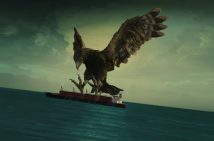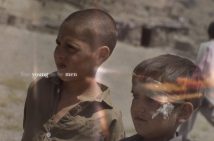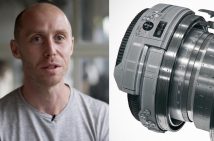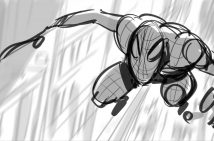Submarine Channel

Interview with Alexandre Brachet: E-Producer du Jour
Interview with Alexandre Brachet: E-Producer du Jour
Alexandre Brachet is a Paris-based e-producer and director of experimental, cross-media production studio Upian. A luminary in the world multi-platform documentaries, he merges cutting-edge technology and traditional techniques to break new ground in made-for-broadband story-telling. We managed to corner him after an inspirational presentation at the very first edition of the International Documentary Film Festival‘s (IDFA) new Doclab program, for a vin rouge-infused chat about two of his latest projects: the much loved (and aforementioned) rich-media micro-doc series Gaza/Sderot (Life In Spite of Everything), and Thanatorama, an interactive Webdoc about what happens after you die.
Thanks so much for taking the time for this interview, it seems like you’re in a million places at once at this year’s IDFA.
Yes it’s been crazy, particularly the pitch session, because it was a first for me and I have learnt a lot, a lot, a lot. We were pitching for funding to complete phases two and three of the Gaza/Sderot project, that is: (a) produce 52 films for TV with the footage that we have, and (b) start phase two on the internet, so that we can offer a dual platform to broadcasters: TV and Internet. Observing all the people pitching and pitching myself was really the most amazing moment of the festival!
Can you tell us how the Gaza/Sderot came about?
We were approached by Serg Gordey with the task of creating a documentary for Internet, which presented characters on both sides of this border going about their daily lives, in a way that forced the audience to see both sides – but also allowed the viewer the choice of how to follow the story.
There is a very intimate, immediate feel to the Gaza/Sderot series. Are the episodes shot and uploaded every day?
Yes this is a live documentary project. The teams go out and shoot in the mornings, edit in the afternoons and then upload the episodes on our Upian Ftp server. Everything is done online, no tapes, no DVDs, no couriers. This is very new. Working with classical producers and filmmakers, who are very attentive to story-telling and visual aesthetics in this new way is also quite different to other online documentaries. We have enough money to produce our own content and not to use what is online or ask for user-generated content. I like user-generated content but it’s not a rule in this program and that’s why it’s original.
You describe yourself as an e-producer. Can you explain what this is?
An e-producer is like a normal producer, but he has to tell the story on the Internet, not TV. I don’t know anything about the TV industry, I know only Internet.
What do you think are the benefits of Internet as a documentary medium, as opposed to television?
I don’t know if there are benefits. Internet is a medium and we have to tell stories via this medium in a particular way. Most important is to reach this young audience, this huge audience on the Internet with documentary programs. For me classical documentaries and online documentaries are not better than each other – but when you speak to the Internet audience you have to speak in a different way, not just put something online in the classical way. You have to use the available multi-media tools to tell your story.
The interface of the Gaza/Sderot project is very strong…
Yes the interface is a success because it fits the content… When you see the line [which divides the interface], it’s a border but also a parallel. It’s a way to say that these two cities are very close, and with the interface you really feel the spirit of the program, you really feel that it’s so amazing that these two cities are so far and yet so close.
How did you develop the interface and usability?
Oh this is our job and we’ve been doing it for years. We start with a sketch on a piece of paper, and then to Photoshop and Flash – it’s a long, long walk….
Is this interactive, non-linear genre the future of documentary?
I think this type of Internet broadcasting will exist in parallel to traditional documentary, but we will see more and more interactive documentary in the coming years. Taking the example of Gaza/Sderot, people don’t have to click-click-click all the time in order to see the story, but you are able to choose the way you see it. This is very important. And in our case interactivity fits the content. When you see the Google map feature for instance, it’s not just a gadget, it is a function to show you how close the two communities are geographically. When you use the Keywords navigation, you can see “Bombs”, “Kassam” but you can also see “Dancing” and “Happiness”, so it’s not just a gadget, it’s a way to express the ideas.
Let’s talk about Thanatorama, can you talk us through the process.
It was created by a team – a writer, a photographer and a multi-media director. They came to me with this project two years ago. They had a lot of media already prepared, and had already tried to connect with broadcasters and press but everybody said “no, these photos are too difficult for our audience”.
So the photos had already been shot, and the team wanted to create an interactive experience with them?
Yes exactly, I’m always working in this way – I don’t have any ideas myself! Maybe for me this is the definition of an e-producer, you are here to help people tell their stories. So if you know any authors, tell them to come talk to me! That’s really important to me, that the story is told from the author’s end. I mean very often on the Internet, information is broadcast in a technical environment, and sometimes it’s very, very far from the peoples’ lives. I like it when ideas come from the people who have a story to tell.
How did you develop Thanatorama after the team approached you?
It was a long long time developing in Flash, about two months. We really wanted to create an immersive feeling, so photos are in very high resolution by Internet standards. In the end it was not so difficult, just very time-consuming. Even the subtitling was really easy to add. We wanted to keep the French voice, which is an important part of the project, so we did subtitles in XML. When you go back two years, and you see that today what we can do in two hours, was impossible two years ago when everything was still very complicated – three years ago Youtube didn’t even exist! So maybe it’s really the beginning of telling stories on the Internet.
Can Thanatorama can really be defined as a documentary? It’s kind of hypothetical…
Yes it’s a real documentary. It’s really about what happens after you die, but in an economic and in a societal way… It’s a real documentary but there is a slow interactivity, for me it’s a way to keep the audience active. Even if it’s very immersive and slow, maybe sometimes it asks a little question – this is a premise for the medium. This is the way I know who to tell stories. It’s a little active participation, but we still know exactly where we’re going with the story-telling…
Do you think an economic model for online documentary will emerge in the near future?
Yes, I’m sure. Probably through existing broadcasters. There is a public service mission, that’s a fact: all the programmes must be free for the audience. Broadcasters have to think about, what is their new model, and we as e-producers are able to help answer this question. One thing I really believe in is co-production, online co-production. It’s something very normal in classical documentary, not so normal in web documentary, but it could be the solution in coming years, until somebody finds an economical key – not me!



